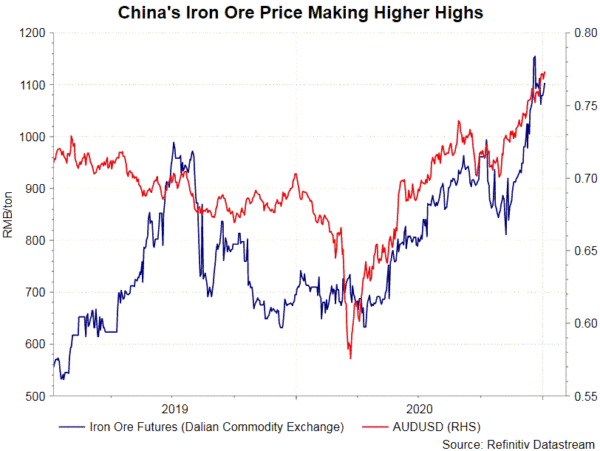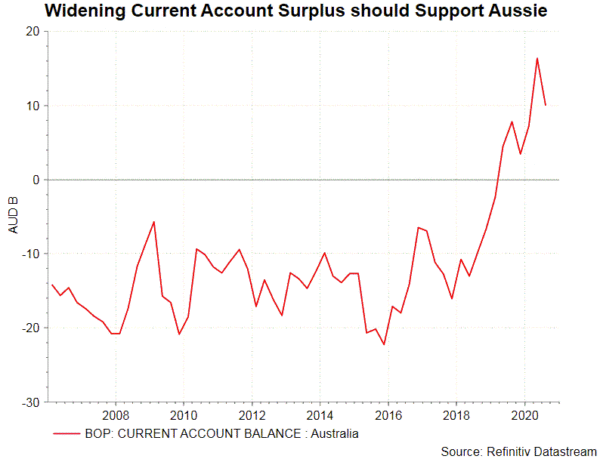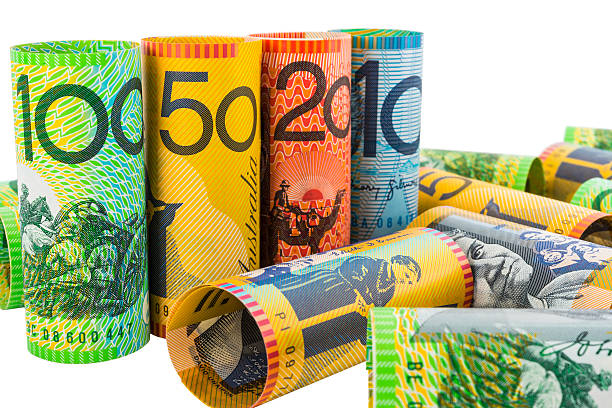Products You May Like
The global reflation theme of 2021 should continue to support AUDUSD. With the cash rate at the effective lower bound, RBA also extended asset purchases worth of AUD100B until mid-2021. Yet, it appears that there is little the central bank can do to curb the currency strength. Risks from trade frictions with China are limited as China only targets small exports categories, while iron ore demand from Australia remains prominent.
In November, RBA lowered the cash rate, by -15 bps, to 0.1%, the effective lower bound. Similarly, the target for the yield on the 3-year government bond yield and the interest rate on new drawings under the Term Funding Facility were also lowered to 0.1%. Meanwhile, the central bank announced to buy AUD100B worth of government bonds of maturities of around 5 to 10 years over the next 6 months, and then review the need for more purchases “in light of the evolving outlook for jobs and inflation”.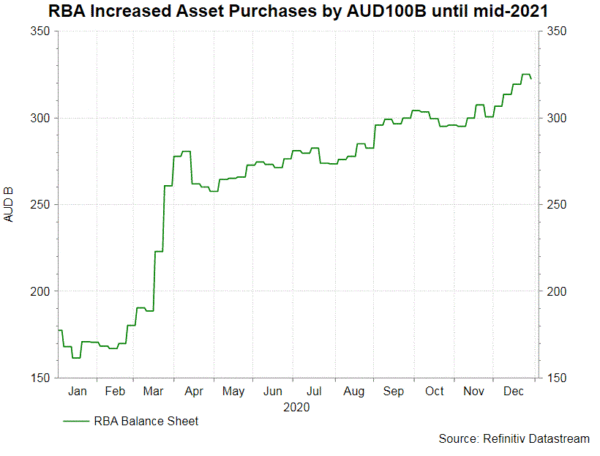
The coronavirus pandemic has accelerated global monetary policy convergence. Although RBA’s rate cut and yield curve control earlier last year did pressure the country’s yield, US/AU yield differential has been mostly negative last year. The Fed’s effort to keep Treasury yield low is expected to perpetuate the greenback’s weakness against major currency.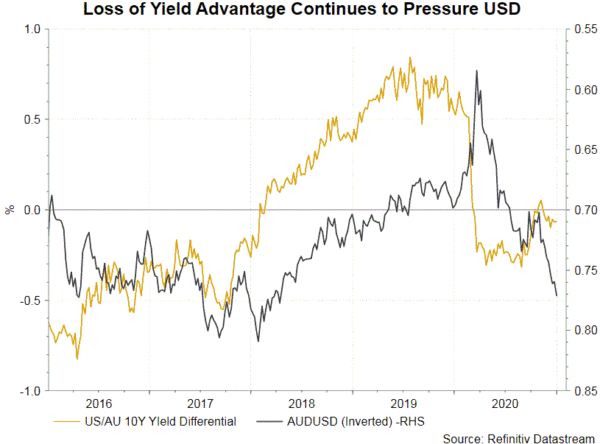
Just like other central banks, RBA has reiterated the commitment to add further easing when necessary. Despite the pledge, we expect the central bank could stay put for the coming year, as the economic recovery remains on track. The economy rebounded sharply in 3Q20, following a technical recession in the first half of last year. Thanks to government’s fiscal support and RBA’s monetary stimulus, household spending was the key driver of the GDP growth in the quarter. It is hopeful that the 4Q20 figure would remain firm. On the job market, the unemployment rate continued to drop while still above the long-term target. The number of payrolls increased +90K in November, beating consensus of +50K addition. Consumer confidence has continued to improve. The Westpac-Melbourne Institute index of consumer sentiment increased 4 months in a row to a 10-year high of 112 in December, up from 107.7 in the prior month.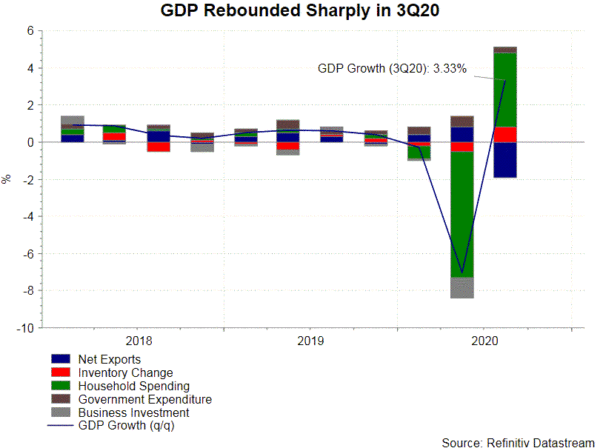
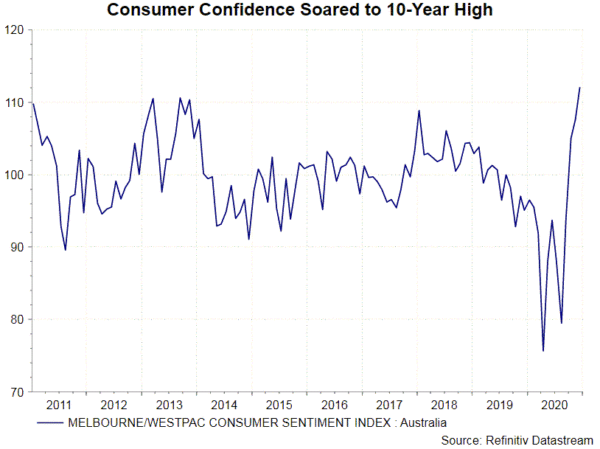 Trade conflict with China could be a risk to Australia’s growth outlook. However, we see limited risks as China mainly targets minor exports categories such as wine, barley and some kinds of seafood. Exports of commodities are not quite affected. Indeed, the recent rally in iron ore price has been a driving force of strong Aussie. Iron ore is the major source of Australia’s exports revenue.
Trade conflict with China could be a risk to Australia’s growth outlook. However, we see limited risks as China mainly targets minor exports categories such as wine, barley and some kinds of seafood. Exports of commodities are not quite affected. Indeed, the recent rally in iron ore price has been a driving force of strong Aussie. Iron ore is the major source of Australia’s exports revenue.
The latest trade data shows that iron ore exports, of which 60% goes to China, soared +14% m/m in October. From a year ago, Australia’s iron ore exports to China jumped +35%. Iron ore export revenue is expected to rise to a record high of AUD123B, up 20% y/y, as supported by strong Chinese demand and supply problems in Brazil. Coal revenue is likely to suffer from the current conflict. Yet, it has little to do with the overall trade in the country as the loss in coal exports is more than offset by gains is iron ore exports. Australia’s terms of trade have improved significantly. After recording surplus for the first time in 2Q19, Australia’s current account has been widening significantly. China has a role to play in the phenomenon. The country increased demand for raw materials as it seeks to expand infrastructural spending in order to revive the economy after the pandemic.
